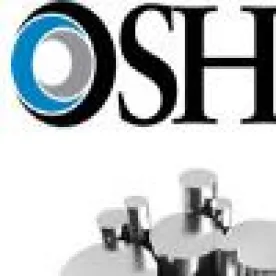The Occupational Safety and Health Administration has issued a new enforcement policy that excludes monorail hoists from regulations on cranes and derricks in constructions.
Stakeholders had argued that monorail hoists are not the same as cranes and derricks in construction, pointing out that these hoists are attached to fixed monorails mounted on trucks, trailers, scaffolding systems, and other equipment.
In a June 30, 2017 “interpretation letter,” OSHA said it will exclude monorail hoists from enforcement of its “Subpart CC – Cranes and Derricks in Construction” regulation, on the condition that employers meet OSHA requirements for overhead hoists and general training standards.
OSHA said, “Monorail hoists are not explicitly excluded from the scope of the rule, and OSHA has issued several letters of interpretation confirming the crane standard’s coverage of specific monorail hoists in certain construction operations.”
“Nonetheless,” it added, “as a number of stakeholders have pointed out, the standard is not a perfect fit for monorail hoists, and OSHA intends to consider rulemaking options to address this issue. The purpose of this memorandum is to announce a temporary enforcement policy pending the resolution of that rulemaking process.”
In an announcement, released on July 3, 2017, OSHA noted, “Some monorail hoists can be extended and contracted in only a fixed horizontal direction. They do not rotate, swing on a hinge, or boom out much farther than the equipment on which they are mounted. They are often used in construction to hoist precast concrete components, storage tanks, and mechanical equipment.”
OSHA added, “The general industry requirements for monorail hoists remain intact.”
Monorail hoists are used during construction to lift and place material, including precast concrete components (such as septic tanks, storm drains, and sewer conduits), storage tanks (such as propane and oil tanks), mechanical components (such as engines and commercial generators), trade-specific components (such as electrical transformers, industrial-spooled materials, and sewer lids), and temporary storage units.
In the agency’s announcement, director of the OSHA Directorate of Construction Dean McKenzie said, “This enforcement policy is a commonsense approach to addressing industry concerns while also ensuring workers are protected.”
In its June 30 interpretation letter, OSHA spelled out issues stakeholders raised, detailing “a number” of provisions of the crane standard that “add very little protection” when monorail hoists are used. These include:
- Monorails are fixed and do not angle up or down, so the equipment does not require the elevated level of protections from power line contact required by the crane standard.
- Monorails cannot boom out significantly beyond the wheelbase of a vehicle or the base of its supporting structure, and so the hoisting equipment does not pose the dangerous cantilevering and stability hazards addressed by the crane standard.
- There is no need for specific protections from hazards posed by booming-out loads, boom-free fall, equipment-swing radius, or any crane-related hazards that would necessitate the use of such devices as level indicators, boom/jib stops, boom/jib limiting devices, boom length/radius indicators, and drum hoist rotation indicators.
- Loads handled by monorail hoists are not heavy enough to trigger the need for a load-weighing device or the use of load charts to prevent overloading and tipping the hosting equipment.




 />i
/>i

